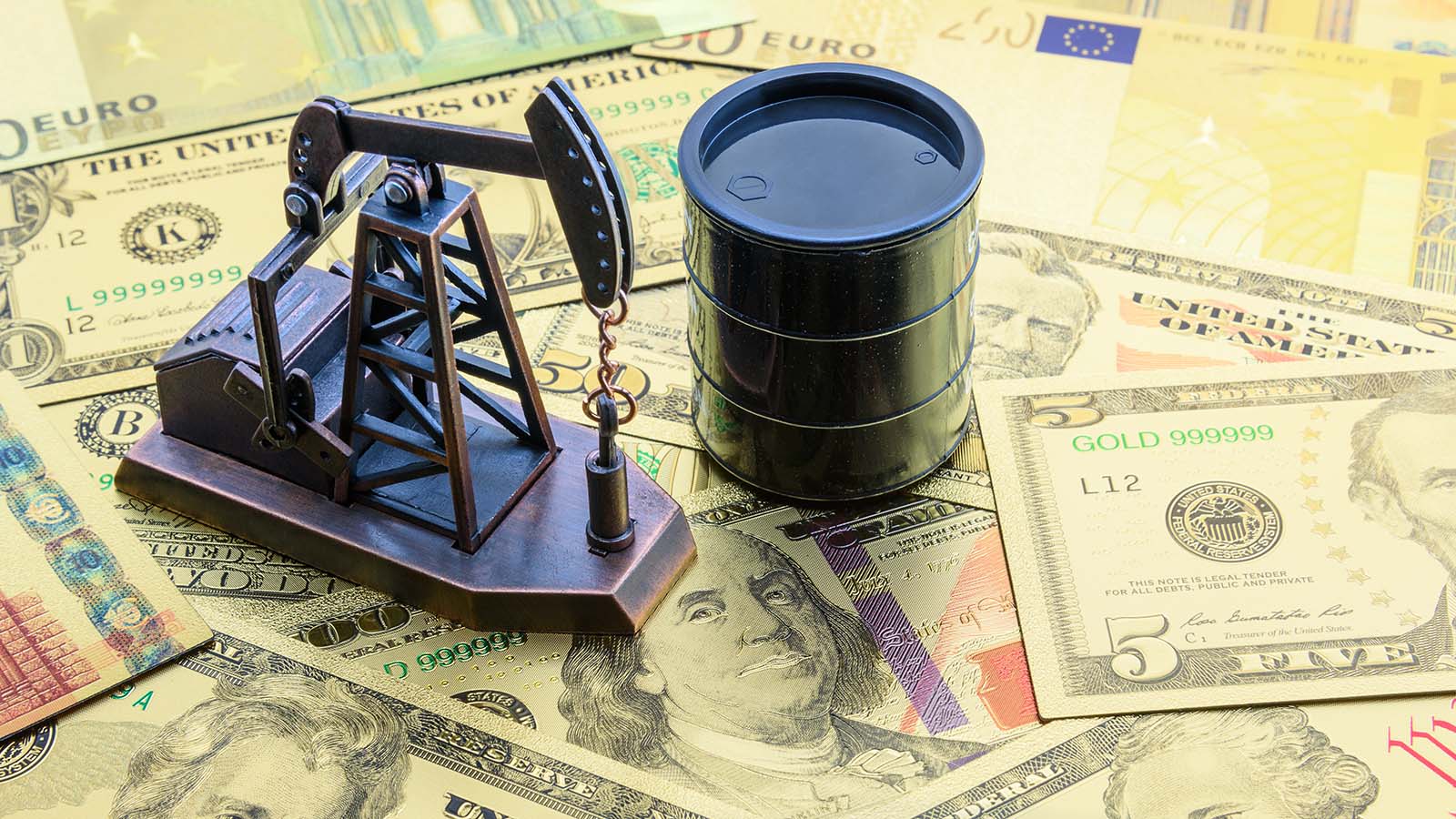Investors in dividend stocks are watching energy prices move significantly higher since the start of 2021, as the price of WTI Crude has almost doubled during this time period. In the past 12 months, the price is up almost 52%. It might not be too far off that oil prices top $100 a barrel, something that hasn’t occurred since July 30, 2014.
While consumers and businesses might be negatively impacted by higher prices, those in the energy sector are largely benefiting from the increase.
Two of our favorite dividend stocks, which also happen to be Dividend Aristocrats, that we feel investors should consider as a way to profit from higher energy prices include:
Dividend Stocks: Chevron (CVX)

Chevron is one of the largest oil companies in the world and one of just two that are headquarter in the U.S. The integrated energy company is valued at $263 billion and generates nearly $163 billion of revenue in 2021.
Unlike some of its peers, Chevron is more leveraged to the price of oil. Several peers produce crude oil and natural gas at very similar rates, giving them a balanced approach to energy production. Chevron’s crude oil to natural gas production ratio is ~61/39.
This means that the company can experience an outsized decline with crude prices collapse, as occurred during the middle of the last decade, but also benefit when prices move higher as they are now.
This is what occurred in both the fourth quarter and full year 2021. Revenue grew 91% in the fourth quarter as demand for energy products has more than recovered from the Covid-19 pandemic. This was even after Chevron reduced its production by 5% from the prior year.
Even stretching back to the same period of 2019, Chevron’s revenue was still higher by nearly a third from pre-pandemic results. For the full year, revenue grew 72% and 11.2% compared to 2020 and 2019, respectively.
Higher prices have also led to increased profits. Outside of the third quarter, earnings-per-share for the quarter of $2.56 was Chevron’s best performance in more than five years and this is with the company’s share count at its highest level since 2012. Full-year earnings of $8.13 was the best result since 2014, though Chevron has not yet taken out its pre-2014 high.
Chevron has capitalized on higher energy prices because it has some of the best properties in the industry. The company has significant acreage in the Permian Basin, with new discoveries and technological advances leading to a surge in reserves. Chevron’s Gorgon project in Australia is adding to the company’s fortunes as well. Nearly 16 million metric tons of liquified natural gas is produced at the site each year, with production life span estimated at more than 40 years.
While bringing new projects on line can take years, most of the company’s new projects begin to deliver cash flow within24 months. This has helped take some of the pressure of the dividend. As a result, Chevron states that its dividend is fully covered with oil at $40 a barrel. Considering where oil is now, investors should take comfort in the stock’s generous yield of more than 4% is safe from being cut. The current yield compares very well to the average yield of 1.4% for the S&P 500.
Chevron’s financial position is so secure now, that the company was able to increase its dividend by 6% for the upcoming March 9 payment date. This marks the company’s second dividend raise in less than a year. Chevron’s dividend growth streak numbers 35 years in length, giving it one of the longest dividend growth streaks in the energy sector. Chevron’s projected payout ratio for the year is 57%, which would be its lowest since 2014 if achieved.
Dividend Stocks: Exxon Mobil (XOM)

The second company on our list of dividend stocks, Exxon Mobil is a diversified energy giant and the largest headquartered in the U.S. The $335 billion company generates annual revenue $286 billion.
Like Chevron, Exxon Mobil also produces more oil than gas, though at a slightly lower production rate of 60/40, which has also led to improvements in business as oil has climbed higher. The company’s fourth quarter saw an 83% improvement in revenue.
Compared to the fourth quarter of 2019, revenue increased 26%, showing that Exxon Mobil isn’t benefiting from an easier comparable period. Revenue for the quarter was the highest in more than five years. Full year revenues are also showing excellent growth, up 58% from 2020 and higher by 8% from 2019.
Profits are also showing strong growth rates. Quarterly earnings-per-share of $2.05 reached the highest levels in more than a half-decade. Full year earnings-per-share of $5.38 was better than every result since 2014. Again, Exxon Mobil hasn’t made a new pre-2014 high, but the trend line is finally facing up after several down years.
Helping matters for the company is that producers are not ramping up production to take advantage of higher prices. Prior the pandemic, Exxon Mobil had guided toward 4 million to 5 million barrels of additional capacity per day through 2025. The company withdrew that guidance and now expects output to remain stable from current levels. This, combined with lower production from OPEC, should help to keep energy prices elevated.
Exxon Mobil is well positioned with high quality assets to take advantage of prices. The company has an estimated 10 billion barrels of oil equivalent in the Permian Basin. With production expected to reach 1 million barrels per day by 2025, Exxon Mobil has decades of proven production coming from this area alone. The company’s Guyana project should also be a contributor to growth going forward. The project has another estimated 10 billion barrels of oil equivalent.
These projects, to name just two, should provide Exxon Mobil the cash flow needed to maintain its dividend. Shareholders received a 1.1% dividend increase for the Dec. 9, 2021 payment, which was essentially a token raise. Exxon Mobil had previously kept its quarterly payment constant for the prior 10 quarters.
The company hasn’t raised its dividend as aggressively as Chevron has recently, but Exxon Mobil has the longer dividend growth streak at 39 years. Shares also offer a yield of 4.4% presently, more than three times the average yield of the S&P 500. Exxon Mobil has a projected payout ratio of just 50% for the year, which would be its lowest since 2014.
Final Thoughts
The energy sector will always be dependent on energy prices. The good news is that Chevron and Exxon Mobil have both endured multiple recessions, energy market collapses, and even a pandemic and still managed to see annual dividends grow year-over-year.
With oil heading toward $100, both energy majors appear to be in a much better place than they were just a few years ago.
For investors looking to take advantage of higher energy prices while receiving a very high dividend yield, Chevron and Exxon Mobil could be two strong investment options.
